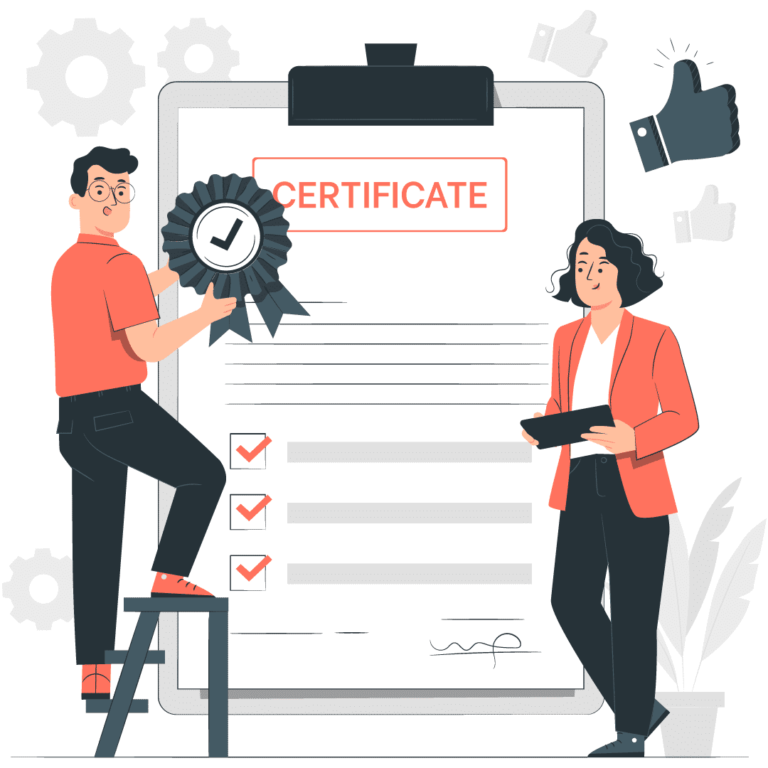Preparing for senior-level cyber security interviews can be overwhelming, especially when the role requires advanced knowledge in risk management, technical expertise, and hands-on incident response. A Senior IT Security Engineer is expected to lead vulnerability assessments, design secure infrastructure, and manage high-level incident response activities.
In this guide, we will cover the most important senior security engineer interview questions, IT security engineer interview questions, cyber security technical interview questions, vulnerability assessment interview questions, and incident response interview questions. These questions and answers will help you prepare thoroughly for your upcoming interview.
Introduction
The role of a Senior IT Security Engineer goes beyond implementing firewalls or monitoring networks. At this level, employers look for leadership qualities, in-depth technical knowledge, and the ability to communicate risk to business leaders. This blog provides a question-and-answer style preparation guide covering real-world technical challenges, strategic decision-making, and governance aspects of cybersecurity.
Senior Security Engineer Interview Questions and Answers
- What is the primary role of a Senior IT Security Engineer?
Answer: The main role is to design, implement, and manage security infrastructure while ensuring compliance with organizational policies. A Senior Engineer leads vulnerability management, incident response, and security automation efforts, often working with other teams to secure applications, networks, and data.
- How do you ensure security in large-scale IT environments?
Answer: I follow a layered security model by implementing defense-in-depth strategies, including perimeter defenses, endpoint protection, identity management, and security monitoring. I also ensure security baselines are applied consistently across all systems through automation and continuous monitoring.
- How do you stay updated on the latest cyber threats?
Answer: I subscribe to threat intelligence feeds, review advisories from sources like CISA, NIST, and vendor bulletins, and participate in professional groups. Regular lab testing and hands-on practice also help in understanding evolving attack techniques.
- How do you balance security with business needs?
Answer: I ensure that security controls align with business objectives. Instead of creating barriers, I propose risk-based solutions that protect critical assets while maintaining operational efficiency. Clear communication with stakeholders helps in achieving this balance.
IT Security Engineer Interview Questions and Answers
- What tools do you use for vulnerability management?
Answer: Common tools include Qualys, Nessus, Rapid7, and OpenVAS. These tools help in identifying vulnerabilities across servers, applications, and networks. I also integrate them into SIEM platforms to correlate results with threat intelligence.
- Explain the difference between vulnerability assessment and penetration testing.
Answer: Vulnerability assessment identifies known weaknesses in a system and provides a risk rating. Penetration testing goes further by actively exploiting vulnerabilities to demonstrate real-world risks. Assessments are broader and continuous, while penetration testing is more targeted.
- How do you secure cloud environments as an IT Security Engineer?
Answer: I apply cloud-native security controls such as AWS Security Hub, Azure Security Center, and GCP Security Command Center. Security includes identity and access management, encryption of data, logging and monitoring, and applying least privilege principles.
- How do you secure an enterprise Active Directory?
Answer: Key steps include enabling tiered administration, enforcing strong password policies, monitoring privileged accounts, implementing Group Policy security settings, and enabling advanced auditing. Tools like Microsoft ATA or Defender for Identity add an extra layer of protection.
Cyber Security Technical Interview Questions and Answers
- What are the common types of cyber attacks organizations face today?
Answer: Common attacks include phishing, ransomware, supply chain attacks, denial of service, insider threats, and advanced persistent threats (APTs). Each requires a different defense strategy, from user training to network segmentation and strong incident response.
- Explain the CIA Triad in cybersecurity.
Answer: The CIA Triad refers to Confidentiality, Integrity, and Availability. Confidentiality ensures data is protected from unauthorized access, integrity ensures data remains accurate and unchanged, and availability ensures resources are accessible when needed.
- What is the difference between IDS and IPS?
Answer: IDS (Intrusion Detection System) monitors traffic and alerts when suspicious activity is detected, but it does not block. IPS (Intrusion Prevention System) goes a step further by automatically blocking malicious traffic.
- How do you secure APIs in an enterprise environment?
Answer: API security includes enforcing authentication and authorization, encrypting data in transit, validating inputs, rate limiting, logging activity, and using API gateways for centralized monitoring.
Vulnerability Assessment Interview Questions and Answers
- How do you prioritize vulnerabilities after a scan?
Answer: I prioritize vulnerabilities based on CVSS scores, exploitability, and asset criticality. A critical vulnerability on a production server gets higher priority than the same issue on a test machine. I also review vendor advisories and active exploits in the wild.
- What steps do you take after discovering a zero-day vulnerability?
Answer: I first check for vendor advisories and apply recommended mitigations. If no patch is available, I implement compensating controls such as network isolation, strict access controls, or disabling vulnerable features until a fix is released.
- How do you integrate vulnerability management into CI/CD pipelines?
Answer: By embedding automated security scans within the pipeline using tools like Snyk or SonarQube. This ensures that vulnerabilities are identified and addressed before deployment. Security gates help prevent code with critical issues from moving forward.
- How do you report vulnerability findings to management?
Answer: I present vulnerabilities in business terms, highlighting risk to operations, compliance impact, and potential financial loss. Executive summaries are provided for leadership, while technical reports are shared with engineering teams for remediation.
Incident Response Interview Questions and Answers
- What are the key phases of an incident response process?
Answer: The phases include preparation, detection and analysis, containment, eradication, recovery, and post-incident review. Each step ensures effective handling of threats and reduces future risks.
- How do you handle a ransomware attack?
Answer: First, isolate infected systems to stop the spread. Then, identify the ransomware strain, restore from backups if available, and work with legal and compliance teams. Paying ransom is discouraged unless absolutely necessary and guided by law enforcement.
- How do you perform digital forensics after an incident?
Answer: I collect and preserve evidence by imaging drives, capturing memory, and securing logs. Tools like EnCase, FTK, or Autopsy help in forensic analysis. Chain of custody is maintained to ensure admissibility in legal investigations.
- How do you test the effectiveness of an incident response plan?
Answer: By conducting tabletop exercises, red team-blue team drills, and simulations. Regular testing helps identify gaps, improve coordination, and train staff to respond effectively under pressure.
Advanced Senior Security Engineer Interview Questions
- How do you implement zero trust architecture in an organization?
Answer: Zero trust is based on the principle of never trust, always verify. It involves micro-segmentation, multi-factor authentication, continuous monitoring, and strict identity controls. Every request is verified regardless of its origin.
- How do you secure a hybrid work environment?
Answer: By using VPNs, enforcing endpoint detection and response, applying multi-factor authentication, and enabling cloud security tools. Employee awareness training is also critical to reduce phishing risks.
- What are your strategies for insider threat detection?
Answer: Insider threats can be detected using behavior analytics, strict access controls, monitoring privileged accounts, and establishing a whistleblower program. UEBA (User and Entity Behavior Analytics) tools provide useful insights.
- How do you conduct a security architecture review?
Answer: I evaluate current network design, authentication methods, encryption practices, and security policies. I compare them against industry standards such as NIST, CIS benchmarks, and ISO 27001 to identify gaps and recommend improvements.
Compliance and Governance Related Interview Questions
- How do you align security practices with compliance frameworks?
Answer: I map controls from frameworks like ISO 27001, NIST CSF, PCI DSS, or HIPAA to organizational policies. Regular audits and compliance dashboards help track adherence and identify areas for improvement.
- How do you prepare for an external security audit?
Answer: By reviewing existing documentation, conducting internal assessments, patching vulnerabilities, and ensuring security processes are well-documented. I also coordinate with stakeholders to ensure evidence is ready for auditors.
- What role does risk management play in IT security engineering?
Answer: Risk management ensures that security efforts are prioritized based on business impact. It helps in allocating resources effectively and ensuring the organization is resilient against the most critical threats.
- How do you handle third-party vendor risks?
Answer: By conducting vendor risk assessments, ensuring security clauses in contracts, and requiring compliance certifications like SOC 2 or ISO 27001. Continuous monitoring and periodic audits ensure vendors remain secure.
Final Thoughts
Senior IT Security Engineer roles demand a combination of technical expertise, leadership, and communication skills. By preparing for senior security engineer interview questions, IT security engineer interview questions, cyber security technical interview questions, vulnerability assessment interview questions, and incident response interview questions, you will be equipped to handle both technical and strategic aspects of the interview.
This complete set of questions and answers will help you demonstrate not only your technical knowledge but also your ability to align security with business goals, manage incidents effectively, and ensure compliance with regulations.





No comment yet, add your voice below!